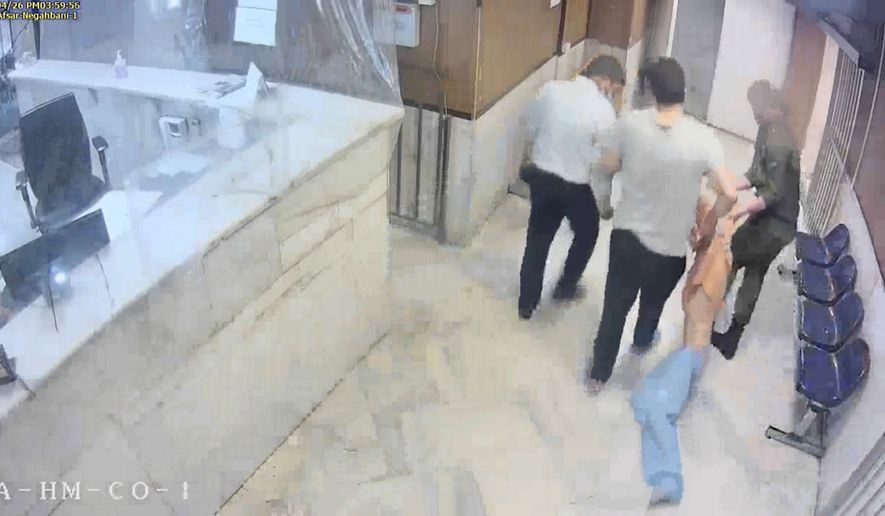Alleged Iranian abuse of prisoners caught on video exposed by hackers is authentic, according to the head of Iran’s prison system, Mohammad Mehdi Hajmohammadi.
Guards beating and dragging prisoners at Tehran’s Evin Prison are among the grim conditions displayed in images that Mr. Hajmohammadi acknowledged in comments published to Twitter on Tuesday. He said he took responsibility for the “unacceptable behaviors” and would try to avoid a repeat of the problems.
The dramatic scenes from inside the prison show the vulnerability of Iran’s technology. One video shows a prison guard in a control room watching surveillance monitors as they begin to flicker black and a message appears in Farsi on the screens.
“Cyberattack: Evin Prison is a stain on [Iranian President Ebrahim] Raisi’s black turban and white beard,” read the message on the control room’s screens. “General protest until the freedom of political prisoners.”
A group of self-described hackers shared the videos with The Associated Press and Radio Farda, which is the Persian language broadcaster of Radio Free Europe/Radio Liberty that receives funding from the U.S. government.
Radio Farda said the hackers identified themselves as “Edalat-e Ali,” which translates to “Ali’s Justice,” and the hackers told the AP in Dubai that they wanted the world to hear their voice for freedom for political prisoners.
Evin Prison was added to the U.S. sanctions list in 2018, when the Treasury Department placed the prison on its Specially Designated Nationals List. Previous reports of abuses at Evin Prison led to the installation of closed-circuit cameras that captured the footage accessed by the hackers.
Much of the footage contains timestamps of 2020 and this year and does not include sound.
The hack of the Iranian prison comes on the heels of a cyber intrusion affecting Iran’s railway system last month.
The breach of Iran’s critical infrastructure involved a disruption at the Ministry of Roads and Urban Development systems and hackers displaying messages about train delays and cancelations that directed passengers to call a number for the office of the Iranian Supreme Leader Ayatollah Sayyid Ali Khamenei, according to cybersecurity firm Check Point.
“While most attacks against a nation’s sensitive networks are indeed the work of other governments, the truth is that there is no magic shield that prevents a non-state sponsored entity from creating the same kind of havoc, and harming critical infrastructure in order to make a statement,” Check Point said in an analysis of the hacks hitting Iranian critical infrastructure published this month.
Details about how the hackers conducted the cyberattack on the prison were not immediately known.
The computers shown in the prison’s control room appeared to be operating Windows 7, which Microsoft stopped supporting with security patches last year.
Iranian systems often use out-of-date or bootlegged software because of sanctions, according to Kim Zetter, cybersecurity journalist and author of “Countdown to Zero Day” which details a cyberattack launched against a nuclear facility in Iran.
• Ryan Lovelace can be reached at rlovelace@washingtontimes.com.




Please read our comment policy before commenting.